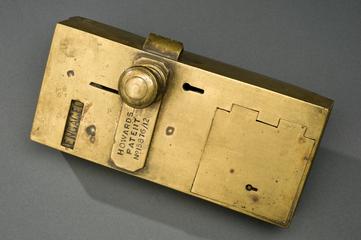
Vaccine estimation apparatus, France, 1880-1920
Vaccine estimation apparatus, invented by H. Vincent, used in the epidemiology laboratory of the College de France, French, 1880-1920
More
Hyacinthe Vincent (1862-1950), a French physician and bacteriologist, invented this apparatus to test the concentration of vaccines. The opaque appearance or turbidity of a vaccine of unknown concentration is compared with one of a known standard. A light is shone through the vaccines and the intensity of the light at the other end is a measure of concentration. It is important to know the concentration of a vaccine in order to determine which is most effective.
The apparatus was used at the Collège de France in the department of epidemiology where Vincent was professor from 1925 to 1936.
- Measurements:
-
overall: 330 mm x 498 mm x 389 mm,
- Object Number:
- A602291 Pt1
- Image ©
- The Board of Trustees of the Science Museum






